Benedict Noel shares how to scale up your mushroom production, preparing mushroom spawn using grain to then inoculate sawdust bags.
Catch up with Part 1, 2, 3, 4 and 5 first.
Mushroom spawn is the medium that you’ll be inoculating with mycelium. This article describes how to make grain spawn, one of the most common types of spawn used in the mushroom industry.
What you need:
- Shiitake culture: on agar, as liquid culture or grain spawn
- A pressure cooker that can reach 15 PSI
- Vessels such as glass jars, polypropylene containers or bags
Types of spawn
You have many different choices when determining what to use as spawn but the most common type of spawn is grain spawn. Many different types of grain can be used. The most common are wheat, rye and millet. Grain spawn is popular for a many of reasons:
- It’s high in nitrogen
- It’s cheap
- It’s fairly easy to get the hydration right
- It holds its form after being hydrated and colonised by mycelium
The other popular type of spawn is sawdust. Sawdust can be obtained from most sawmills or furniture workshops or you can use hardwood fuel pellets. Sawdust has the same properties as grain spawn except that it is low nitrogen – it’s basically all carbon. This means that if you use sawdust as spawn and want to maintain reasonable yields, the substrate that you’re inoculating needs to contain a higher nitrogen content. This can be done by adding supplements to sawdust such as bran or coffee grounds.
When hydrating your spawn, you want it to get to field capacity, but no more. If your grain becomes overly hydrated it can break apart in the pressure cooker. When your spawn gets mushy it makes it harder for the mycelium to colonise the grain, and harder to break it apart when you’re ready to transfer it. Likewise, if it’s under-hydrated, the mycelium will struggle to colonise it.
Preparing wheat grain
The are many different ways to hydrate your grain but the easiest is by soaking it in a bucket. The type of grain will determine how long you need to soak it for. In general, a 24 hour soak is good for most grain types (millet takes slightly less time). Add wheat to a bucket, cover with water and leave it to soak for approximately 24 hours.

Soaking grain in buckets. On the left is grain used for chicken feed, on the right is organic grain from a health food store.
If you’re short on time, you can add your grain to boiling water in a pot and leave it to simmer for 20-30 minutes. With wheat/rye, you can check the grain periodically by squeezing it with your fingernail; if the inside is turning from white to transparent, it is ready to strain and add to your jars. See the photo at the top of this article.
After the grain is hydrated, you’ll need to drain it. I have a large sieve so I can drain several kilograms at once. I usually tip the sieve up on an angle and leave it to drain for at least 30 minutes if I’ve soaked it in a bucket. If you’ve cooked the grain on the stove, it will require less time to drain as the heat will evaporate a lot of the moisture away.
Adding to jars/bags
If you’re working on a small-scale, you’ll probably use jars for your grain spawn. Most people will use ball mason jars due to their shape, and because you can buy filter discs that will fit them nicely to facilitate air exchange. However, when you’re starting out, any jar will do. I find that the jars that hold salsa are a good size to work with (and it’s a great excuse to eat some corn chips).
Your jars will need to have some holes in their lids as the mycelium needs air exchange to grow well. There are a number of ways to do this: by using filter discs, micropore tape, airport lids or pillow stuffing (ideally made of hydrophobic polyester).
If you’re using bags with a filter patch, they already have air exchange built in. When filling the bags, you want to fill them so that they’re a maximum of 1-2 inches (2-5 cm) below the filter patch. You don’t want grain to block the filter patch, and you want to leave enough air in the bag so that you can shake it.
We’ll move on to the pressure cooking stage in the next installment… stay tuned!
Based on an original post available here by Benedict Noel at The Mushroom Guide.
 About the author
About the author
The Mushroom Guide is written by Benedict Noel from Perth, Western Australia. He’s been hooked on mushroom growing since watching this TED talk in 2015 and has been building his knowledge and experience ever since. Since starting out, he’s helped run a couple of cultivation courses, given presentations at festivals and grown a wide variety of mushrooms, from oyster and shiitake to pioppino and chestnut.

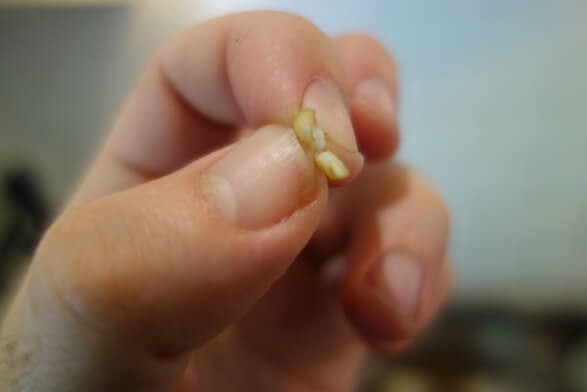



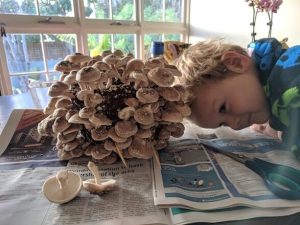
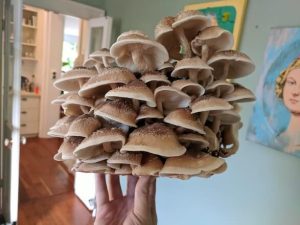
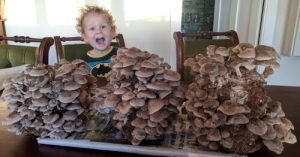

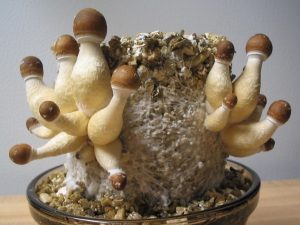
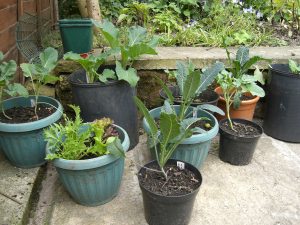
1 Comment
You don’t really need to modify your jars.
Before PCing, flip the lid over such that it can’t form a full seal. Then place the filled jar on a smooth surface — rotate the band with thumb and forefinger just until the jar begins to rotate.
It is then safe to pressurize, and at that tightness there will be sufficient air to for colonization.